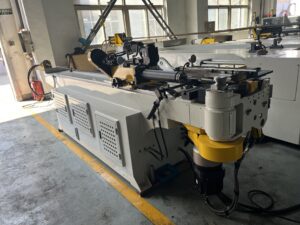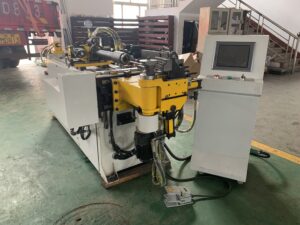
One area where advanced technology is making a significant impact is pipe bending. Gone are the days of laborious manual bending techniques; today, cutting-edge pipe bending technology is streamlining fabrication workflows, enabling manufacturers to produce complex components with unparalleled efficiency and precision.
A Look at Traditional Pipe Bending Methods
Before delving into the modern marvels of pipe bending, let’s briefly examine the traditional approaches:
- Manual Bending: This method, often using hand tools or simple bending machines, relies heavily on operator skill and experience. It can be labor-intensive, prone to errors, and may not achieve the desired accuracy for complex shapes.
- Hydraulic Bending: This approach utilizes hydraulic pressure to bend pipes However, it can still be slow and require significant setup time.
The Rise of Advanced Pipe Bending Technology
technology has revolutionized the industry, offering numerous advantages over traditional methods:
- CNC Pipe Bending: Computer Numerical Control (CNC) bending machines are the gold standard in precision and efficiency. These machines utilize computer programming to guide the bending process, ensuring accuracy and repeatability.
- Benefits:
- Unmatched Precision: CNC bending eliminates human error, resulting in consistent, high-precision bends.
- Automated Operation: CNC machines can be programmed to perform complex bends autonomously, reducing labor costs and increasing productivity.
- Versatility: CNC bending machines are capable of handling various pipe materials, sizes, and shapes.
- Benefits:
- Laser Bending: This innovative technology uses lasers to heat and bend pipes, offering exceptional accuracy and flexibility.
- Benefits:
- Precise Control: Laser bending allows for highly controlled bending processes, resulting in intricate shapes with minimal distortion.
- Minimal Material Waste: Laser bending can minimize material waste by bending pipes to exact specifications.
- Non-Contact Bending: The laser bending process does not require physical contact with the pipe, preventing damage or surface imperfections.
- Benefits:

Benefits of Advanced Pipe Bending Technology Across Industries:
Here are some key benefits across various industries:
1. Automotive:
- Lightweight Designs: Advanced pipe bending techniques enable the creation of lightweight, yet strong, components for vehicles, contributing to fuel efficiency and improved performance.
- Complex Geometries: Modern bending technology allows for the production of intricate shapes for exhaust systems, chassis components, and other critical parts.
2. Aerospace:
- High-Performance Materials: It technology can handle high-strength and heat-resistant materials used in aircraft construction, ensuring structural integrity and safety.
- Precision and Repeatability: The accuracy of advanced bending methods is essential for aerospace applications, where even minor deviations can have significant consequences.
3. Energy:
- Pipeline Construction: It technology plays a crucial role in the efficient and accurate construction of pipelines for oil, gas, and water transportation.
- Renewable Energy: Advanced bending techniques are used in the fabrication of components for solar panels, wind turbines, and other renewable energy infrastructure.
4. Construction:
- Structural Components: It is essential for creating beams, columns, and other structural elements used in buildings and bridges.
- Piping Systems: Advanced bending technology allows for the creation of complex piping systems for water, gas, and other utilities.




